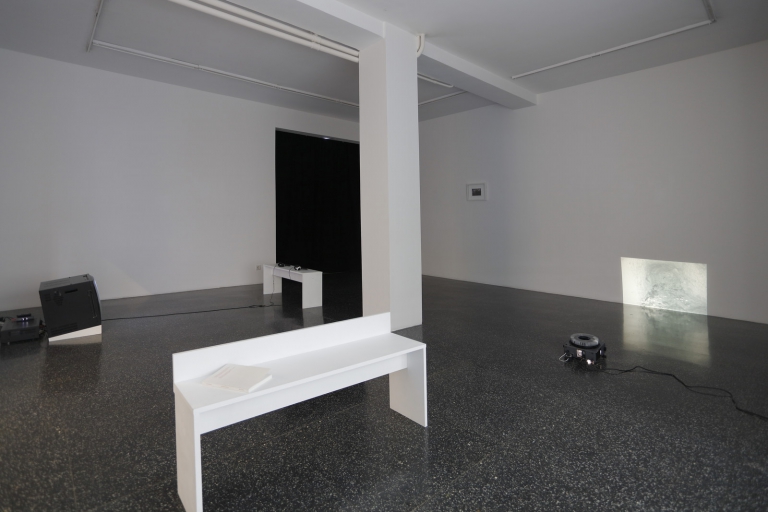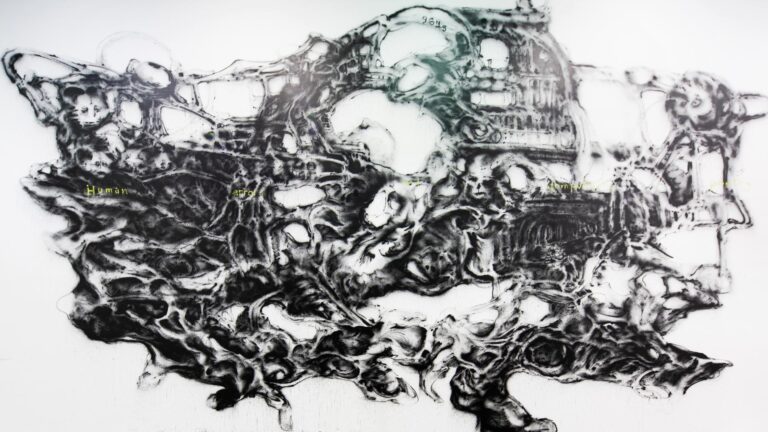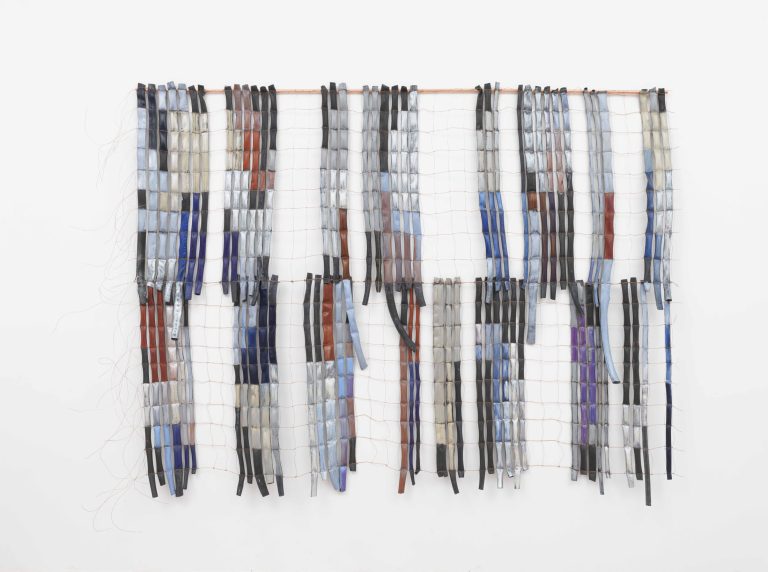Artists: Albrecht/Wilke, Arno Beck, Johannes Bendzulla, Pierre Clement, Olga Fedorova, Marta Galmozzi, Marian Garrido, Joan Heemskerk, Eva & Franco Mattes, Mario Santamaría, Bartomeu Sastre, Mathew Zefeldt
Exhibition title: Better Call Mark
Venue: Galería Fran Reus, Mallorca, Spain
Date: June 9 – September 9, 2022
Photography: Grimalt de Blanch / all images copyright and courtesy of the artists and Galería Fran Reus, Mallorca
The massification of digital technologies developed through various waves since the end of the Twentieth century. The first wave was arguably caused by the tsunami of Windows 95, the first accessible personal computer with a Graphical User Interface (GUI), that found in the World Wide Web its killer application. From 16 million users in December 1995, the internet population grew up to 361 million users in December 2000. The second wave was generated by the joint advent of smartphones (which made digital media accessible even for those who don’t need a computer), wifi networks and 3G connections (which allowed us to be always online) and social media (which made maintaining an online presence simple, desirable and addictive). In December 2017, the internet population reached 4.1 billion users, 54% of the total world population.
The third wave was caused by the Covid-19 pandemic. During quarantine, the last pockets of the digital divide were brutally erased by the need to survive. For the first time in history, access to digital media was required not just for leisure and entertainment, but also to access some fundamental human rights: the right to work and have an income; the right to eat and buy what you need; the right to get schooling and health treatments; the right to stay in touch with your beloved ones; the right to get out, being able to prove that you are healthy. Those belonging to the large, layered elite of cognitive workers – from billionaire CEOs to precarious gig workers – became, to use a word borrowed from Paul B. Preciado, “horizontal workers”, turning their homeplaces (and often their beds) into multimedia stations where the line between work time and free time, labor and leisure, blurred to the point of disappearance. The pandemic made it clear that the way of living portrayed by the Pixar animated movie Wall-e (2008), where what’s left of the humankind lives on a spaceship, fed with sugar and entertainment by machines and rejected by a terrestrial environment that has become dangerous, hostile and unlivable, is not only conceivable but possible and sometimes required in the here and now. The “vertical workers” – those who couldn’t afford to stay at home, who had to get out and be in danger in order to make the world run smoothly – were increasingly managed and coordinated, hired and fired, by apps and disembodied systems. In December 2021, the internet population reached 5,2 billion users, 66.2% of the total world population.
-Domenico Quaranta
Better Call Mark, 2022, exhibition view, Galería Fran Reus, Mallorca
Better Call Mark, 2022, exhibition view, Galería Fran Reus, Mallorca
Better Call Mark, 2022, exhibition view, Galería Fran Reus, Mallorca
Better Call Mark, 2022, exhibition view, Galería Fran Reus, Mallorca
Mario Santamaría, Dizzy (2018) Router, stone, 15 x 12 x 22 cm
Mario Santamaría, Speculative Networks (2018 – 2020), Drawings on paper, 15 x10 cm
Eva & Franco Mattes, AnnoyingJapaneseChild Dinosaur (2007). 3/3. Print on canvas. 91.4 x 121.9 cm, Kao Sands (2007). 1/3. Print on canvas. 91.4 x 121.9 cm Planta Etzel (2007). 2/3. Print on canvas. 91.4 x 121.9 cm
Eva & Franco Mattes, AnnoyingJapaneseChild Dinosaur (2007). 3/3. Print on canvas. 91.4 x 121.9 cm, Kao Sands (2007). 1/3. Print on canvas. 91.4 x 121.9 cm Planta Etzel (2007). 2/3. Print on canvas. 91.4 x 121.9 cm
Arno Beck, Perpetuum Mobile (2022). Watercolors on rag paper. Applied by a CNC milling machine . 98 x 79 cm
Better Call Mark, 2022, exhibition view, Galería Fran Reus, Mallorca
Pierre Clement, huRI,meshGTI(mar) (2022). Aluminium, canvas, jesmonite, acrylic, polyester, uvjet print on transparent acrylic glass. 70 x 50 x 10 cm
Better Call Mark, 2022, exhibition view, Galería Fran Reus, Mallorca
Albrecht/Wilke, Wursthunger (2022). Oil, acrylic on canvas. 120 x 100 cm
Johannes Bendzulla, Kitchen (kitchen / right) (2021). Inkjet print on laid paper. 140 x 90 x 3 cm
Johannes Bendzulla, Untitled (arctic), 2021, Inkjet print on laid paper, covering both front and sides of the work. 81 x 61 x 3 cm
Better Call Mark, 2022, exhibition view, Galería Fran Reus, Mallorca
Olga Fedorova, Dreaming of the Queen (2020). Print on canvas. 150 X 120 cm
Olga Fedorova, Empty Sky (2021). Print on canvas. 150 X 120 cm
Johannes Bendzulla, Desktop (2021). Inkjet print on matte paper. 50 x 35 cm
Better Call Mark, 2022, exhibition view, Galería Fran Reus, Mallorca
Mathew Zefeldt, T -Bone (2020). Acrylic on canvas over panel . 61 x 46 cm
Better Call Mark, 2022, exhibition view, Galería Fran Reus, Mallorca
Mathew Zefeldt, Customize Avatar (2020). Acrylic on canvas over panel . 122 x 92 cm
Joan Heemskerk, AUQUAY A2B (2021)(E1/3). Vídeo 8′ 09” + Vídeo 7′ 24”
Marian Garrido, NewNormality2 (2022). Digital image. 2880 × 1800 px NFT
Bartomeu Sastre, Basidiomycota (2022). Reversed digital photography. 4.000 x 6.000 px NFT
Bartomeu Sastre, From the end and the beginning and back again (2022). Reversed digital photography and text. 4.000 x 6.000 px NFT

































